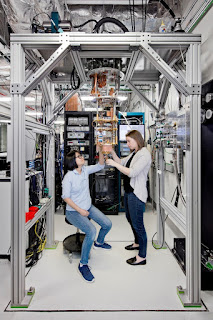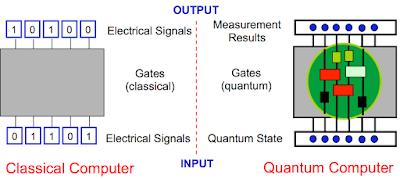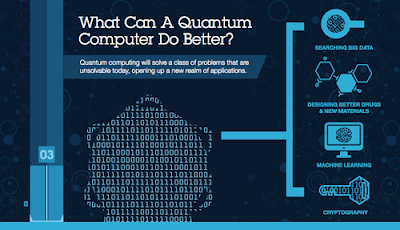Twitter Feed
One AWESOME Week of Cloud Computing
We just finished up five AWESOME days of cloud computing training with USAREUR in Schwetzingen, Germany ! CHECK IT OUT !! Create your own video slideshow at animoto.com. Sure we…
NGA Exploring “Community Cloud” With NCOIC
The National Geospatial-Intelligence Agency (NGA) is looking to leverage industry expertise through collaboration with the Network Centic Operations Industry Consortium (NCOIC). NGA provides timely, relevant and accurate geospatial intelligence in…
DoD, NASA and GSA Address Secure Cloud Computing
On Thursday, May 26th, the Federal Executive Forum featured three important Federal cloud computing leaders: David McClure- Associate Administrator, GSA Office of Citizen Services and Communications Col. Kevin Foster- Office of…
Cloud Computing Day at DoDIIS
I’m declaring Monday, May 24th, as Cloud Computing Day at DoDIIS. Lieutenant General Richard Zahner, Army Deputy Chief of Staff, G2, seemed to get things going with his video that…
Vivek Kundra – State of Public Sector Cloud Computing
Last week Federal Chief Information Officer Vivek Kundra release his report on the “State of Public Sector Cloud Computing”. The report not only details Federal budget guidance issued to agencies…
Cloud Computing at DoDIIS
Next week in Phoenix, AZ, the Defense Intelligence Agency will host the 2010 Department of Defense Intelligence Information Systems (DoDIIS) Worldwide Conference. The theme of this event is “Mission Powered…
Open Group Publishes Guidelines on Cloud Computing ROI
In an important industry contribution, The Open Group has published a white paper on how to build and measure cloud computing return on investment (ROI). Produced by the Cloud Business…
The Army’s iPhone Story
Sandra Erwin of National Defense magazine just published an excellent article on the Army’s foray into developing soldier-friendly smartphone applications. Giving credit to Army CIO Lt. Gen, Jeffrey Sorenson and…
Vivek Kundra Steps Up to Cloud Computing’s Next Challenge
” [C]loud customers must be able to easily store, access, and process data across multiple clouds; weave together a mesh of different services to meet their needs; and have a…
Cloud Computing’s Next Challenge
Earlier this month, Melvin Greer and I teamed up on a Military Information Technology piece. Melvin is a senior research engineer and cloud computing chief architect at Lockheed Martin, and…
- The release of a new API (Application Program Interface) for the IBM Quantum Experience that enables developers and programmers to begin building interfaces between its existing five quantum bit (qubit) cloud-based quantum computer and classical computers, without needing a deep background in quantum physics.
- The release of an upgraded simulator on the IBM Quantum Experience that can model circuits with up to 20 qubits. In the first half of 2017, IBM plans to release a full SDK (Software Development Kit) on the IBM Quantum Experience for users to build simple quantum applications and software programs.
The IBM Quantum Experience enables anyone to connect to IBM’s quantum processor via the IBM Cloud, to run algorithms and experiments, work with the individual quantum bits, and explore tutorials and simulations around what might be possible with quantum computing. Since its launch less than a year ago, about 40,000 users have run over 275,000 experiments on the IBM Quantum Experience. It has become an enablement tool for scientists in over 100 countries and, to date, 15 third-party research papers have been posted to arXiv with five published in leading journals based on experiments run on the Quantum Experience.
 The broad availability of quantum computing capability could prove to be a significant blow to current data encryption practices. In 2015 the US National Security Agency actually advised US agencies and businesses to prepare for a time when the cryptography protecting virtually all e-mail, medical and financial records, and online transactions would be rendered obsolete by quantum computing. The US National Institute for Standards and Technology (NIST) is also running a competition to spur work on post-quantum algorithms.
The broad availability of quantum computing capability could prove to be a significant blow to current data encryption practices. In 2015 the US National Security Agency actually advised US agencies and businesses to prepare for a time when the cryptography protecting virtually all e-mail, medical and financial records, and online transactions would be rendered obsolete by quantum computing. The US National Institute for Standards and Technology (NIST) is also running a competition to spur work on post-quantum algorithms. - Drug and Materials Discovery: Untangling the complexity of molecular and chemical interactions leading to the discovery of new medicines and materials;
- Supply Chain & Logistics: Finding the optimal path across global systems of systems for ultra-efficient logistics and supply chains, such as optimizing fleet operations for deliveries during the holiday season;
- Financial Services: Finding new ways to model financial data and isolating key global risk factors to make better investments;
- Artificial Intelligence: Making facets of artificial intelligence such as machine learning much more powerful when data sets can be too big such as searching images or video; or
- Cloud Security: Making cloud computing more secure by using the laws of quantum physics to enhance private data safety.
This content is being syndicated through multiple channels. The opinions expressed are solely those of the author and do not represent the views of GovCloud Network, GovCloud Network Partners or any other corporation or organization.
( Thank you. If you enjoyed this article, get free updates by email or RSS – © Copyright Kevin L. Jackson 2017)
Cloud Computing
- CPUcoin Expands CPU/GPU Power Sharing with Cudo Ventures Enterprise Network Partnership
- CPUcoin Expands CPU/GPU Power Sharing with Cudo Ventures Enterprise Network Partnership
- Route1 Announces Q2 2019 Financial Results
- CPUcoin Expands CPU/GPU Power Sharing with Cudo Ventures Enterprise Network Partnership
- ChannelAdvisor to Present at the D.A. Davidson 18th Annual Technology Conference
Cybersecurity
- Route1 Announces Q2 2019 Financial Results
- FIRST US BANCSHARES, INC. DECLARES CASH DIVIDEND
- Business Continuity Management Planning Solution Market is Expected to Grow ~ US$ 1.6 Bn by the end of 2029 - PMR
- Atos delivers Quantum-Learning-as-a-Service to Xofia to enable artificial intelligence solutions
- New Ares IoT Botnet discovered on Android OS based Set-Top Boxes




